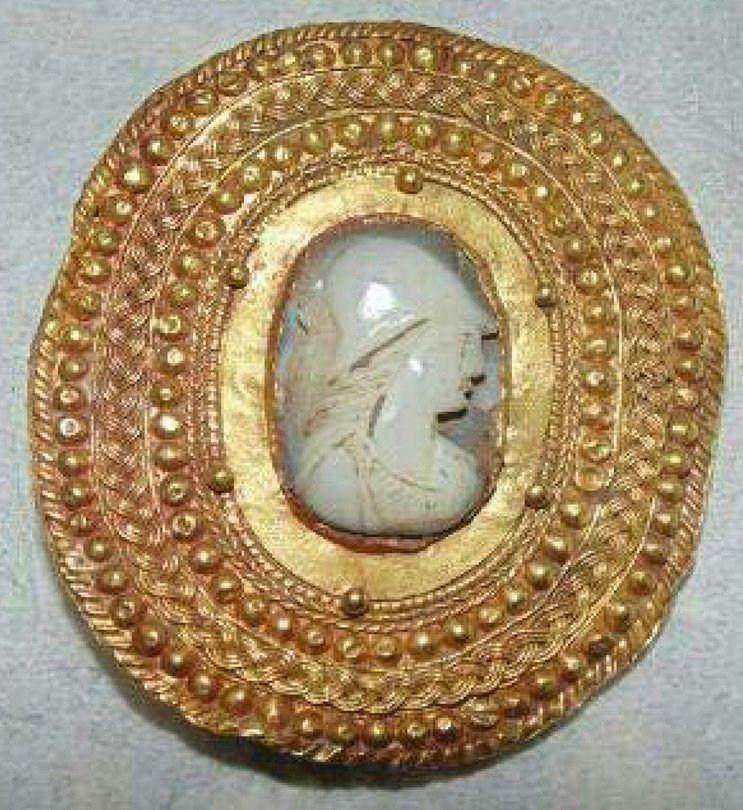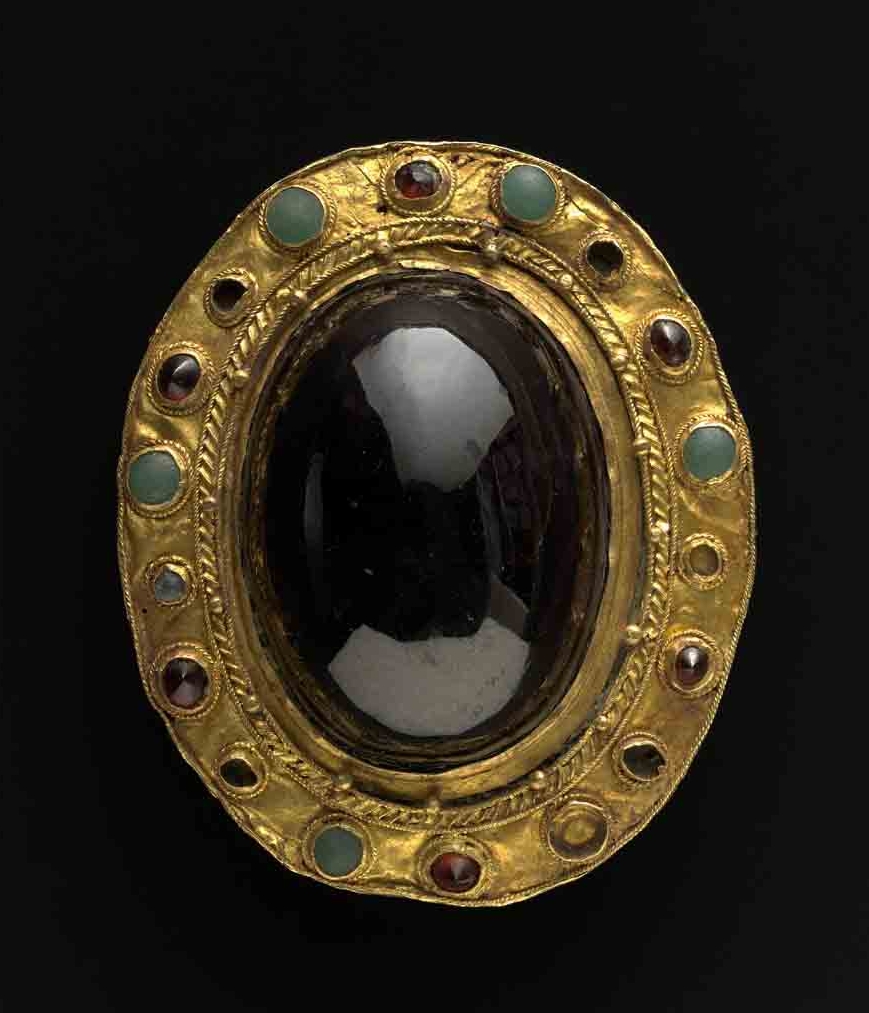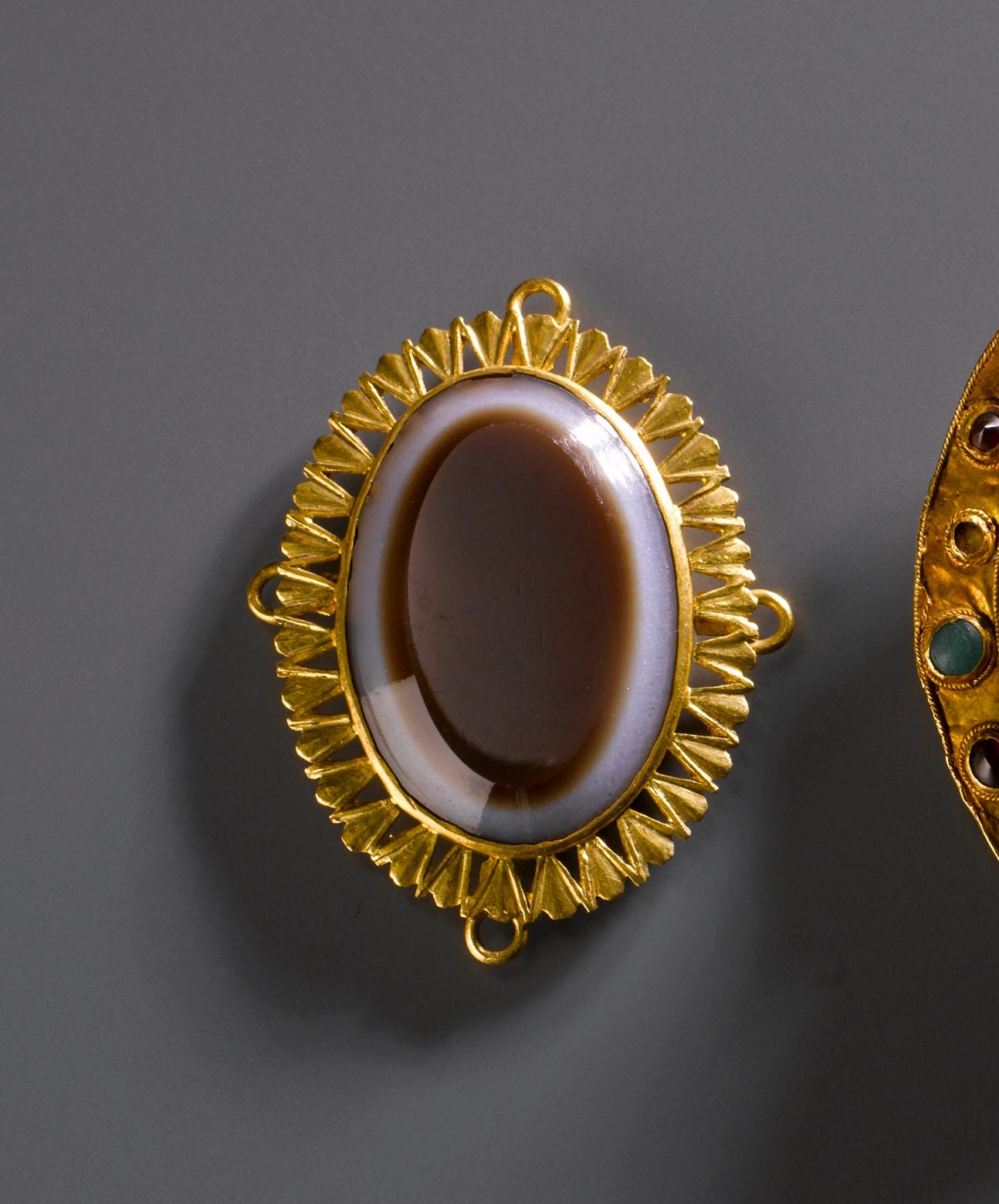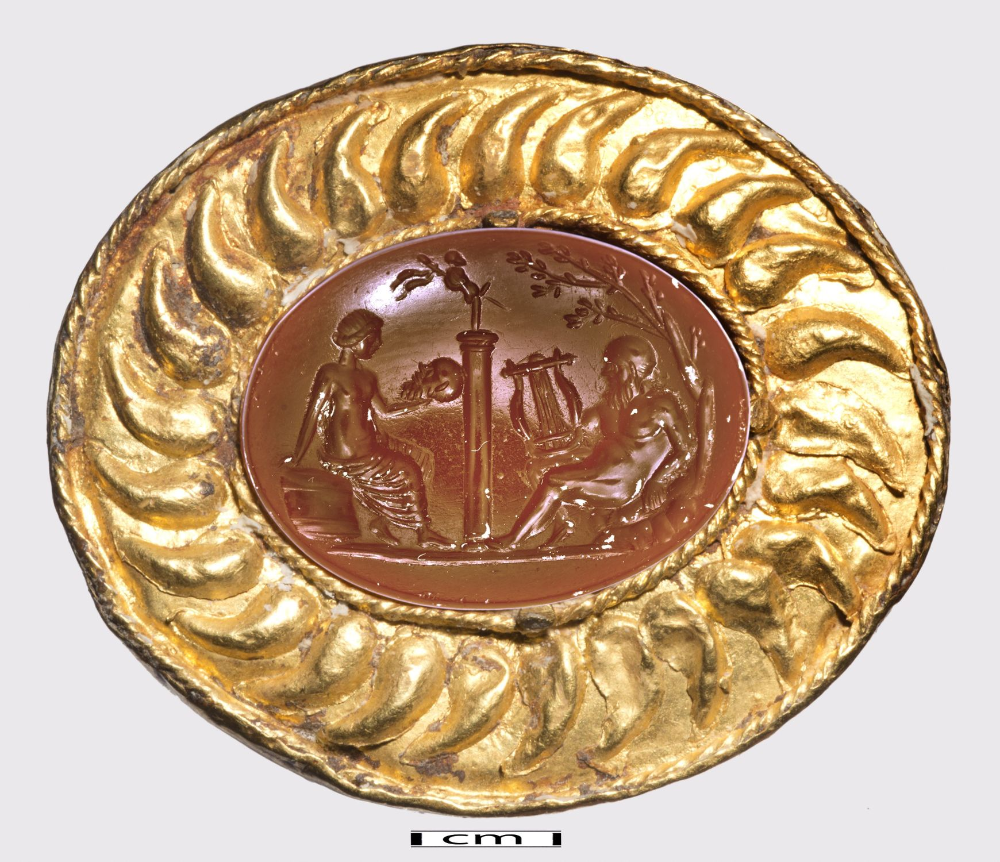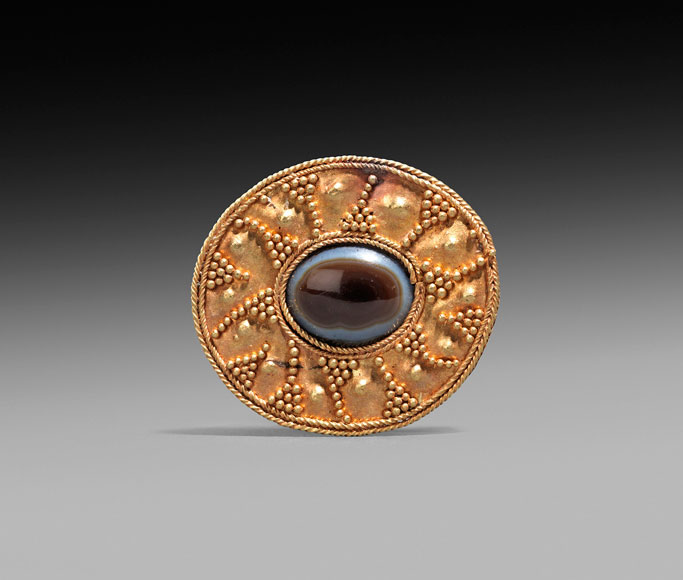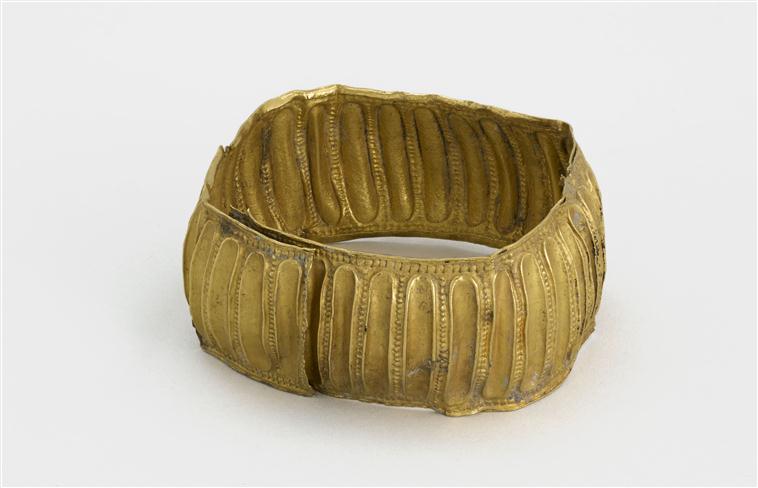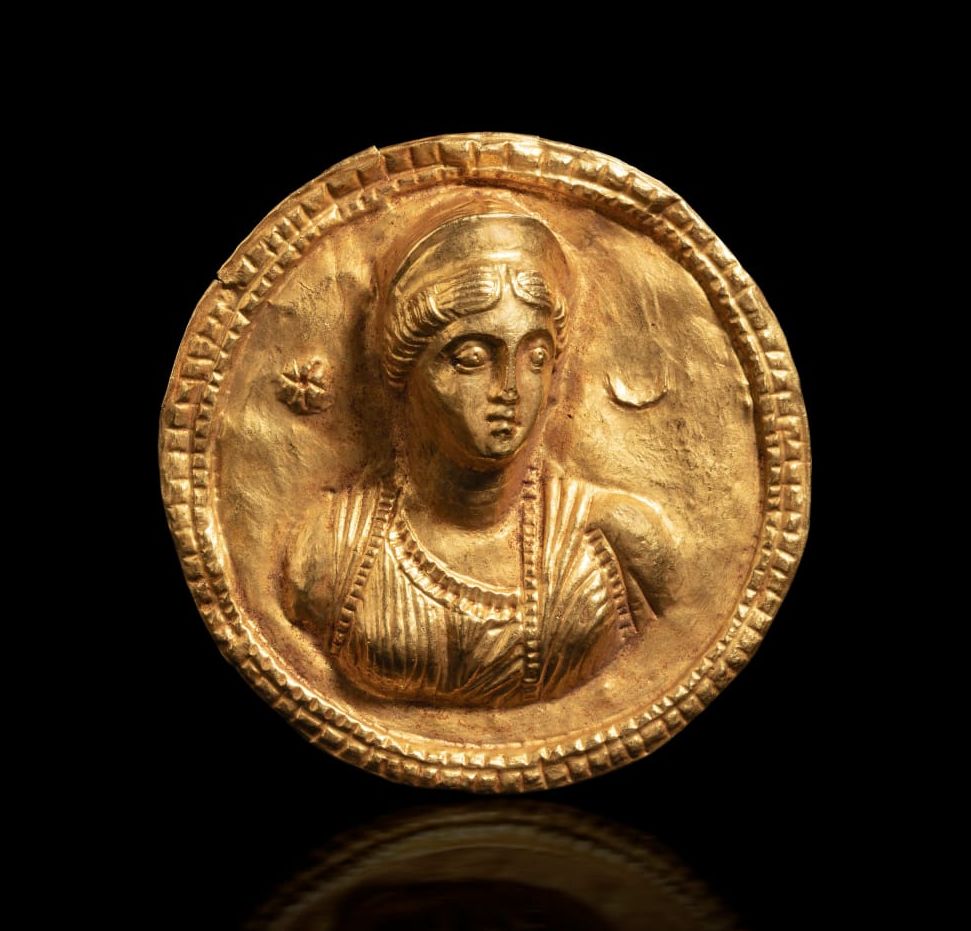


Pair of bracelets from the Tutankhamun’s tomb, 14th century BCE
Photo (C) CULTNAT, Dist. RMN-Grand Palais / Ayman Khoury https://www.photo.rmn.fr/archive/11-537216-2C6NU0ODZY89.html


Gold ornaments with sardonyx “eye stones” and small agate cabochons from the Queen’s Tombs discovered in 1988 – 1989 by Dr. Muzahim Mahmoud under the private apartments of the palace of Assurnasirpal II, 9th century BC, Nimrud, Iraq.
Photo by Marc DEVILLE/Gamma-Rapho via Getty Images)


The bracelet from the Phoenician tomb of Kition, Cyprus, with circular box setting holding a discoid cabochon agate, made around the end of 8th century BCE; 2.5 cm wide.
The Phoenician gold jewellery from Kition, Cyprus
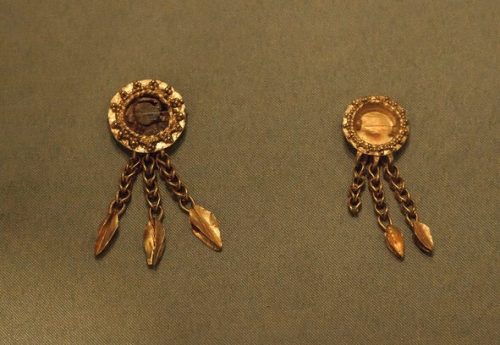
Kurgan group Pyatimary I, kurgan 4, burial 3. Orenburg region. [Курганная группа Пятимары I. Оренбургская область]
Photo © Vladimir d’Ar
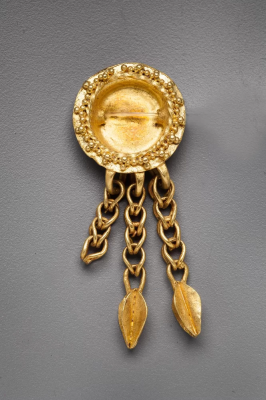
ГИМ 98068/395
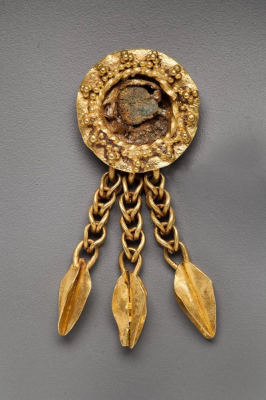
ГИМ 98068/394


“Part of a gold ear-ring: disc with granulated rays around the edge; the stone in the centre is now missing.”
British Museum 1772,0314.93




Two pair of earrings, one with pearls; female face in high relief in the middle, diameter ~2 cm, Roman Syria https://collections.louvre.fr/ark:/53355/cl010288733
https://collections.louvre.fr/ark:/53355/cl010288734


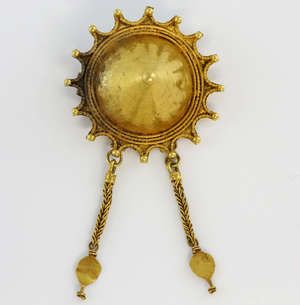

“Rare Roman jewelry”, brooch from Syria.
“The small hoard has been in the same family for almost a century. It was collected by the French grandfather of the owner, an amateur scholar and enthusiast of ancient civilizations. He assembled the small collection in Europe and later in Syria where he was stationed during the 1930’s.”
“Fine gold fibula, brooch for gathering a robe, Byzantine period in the form of a shield boss, probably Syrian, 4.3 x 8 cm; 14.4 grams. Gold tested on reverse, testing as 22 ct plus”
Auction site https://www.ewbankauctions.co.uk/News-Blog/rare-roman-jewellery-going-under-the-hammer-at-ewbank-s#
Brooch auction link


Sun shaped brooch dated to 400-500 CE; gold, diameter 2,8 cm. Gift of Gustav Radeke, in the RISD Museum, inv. no. 15.065



“A Holy Land Gold Brooch, ca late 4th century BCE (???)
of high karat sheet gold, the raised central boss with a large granule, the base framed by a band of twisted filigree wire, the star border framed with roped filigree wire and tipped with granules, two hoops for attachment on the back.
Condition: Fine and quite fragile with small structural losses to the center and edges, some granule loss, still a lovely example overall.”
Dimensions: Diameter: 3.6 cm (1 1/2 in)
Provenance: Paul Ilton private collection, acquired prior to 1958
Published: Ilton, Paul. The Bible Was My Treasure Map. New York, New York: Messner, 1958. p. 253
From an auction https://www.sandsoftimedc.com/collections/ancient-jewelry/products/mj1305

Photo © President and Fellows of Harvard College
Harvard Art Museum Inv. no. 2012.1.105 https://hvrd.art/o/57703
Copper-Silver Alloy Brooch, 2nd-4th century CE
Tutulus Fibula [the circular disc plate was extended upwards to form a cone]
Copper-silver alloy, gilded tip
Technique Cast, lost-wax process
Dimensions 2.3 x 4.8 cm (7/8 x 1 7/8 in.)
“The ball at the tip of the cone retains traces of gilding.
Technical Observations: The surface is white metal with areas of green and red. Some areas are deeply mineralized. The clean metallic surfaces, the lack of a layer of green corrosion, and the survival of lumps of red, probably cuprite, may indicate that the object was cleaned electrolytically, which removed any green corrosion. The bright green corrosion products on the back look more superficial and recent, and these could be the result of residues acting on the surface after this treatment.
The flat star-shape and the projecting conical section were cast as a single piece. The wax model for this component may have been shaped indirectly using a mold. The beaded bands, decorative balls, and pin components all appear to be soldered in place with a hard solder. The silver color of the surfaces, including some on the back, is probably the result of a wash of silver over the copper alloy substrate. The slightly reddish tint in some areas could be the copper alloy surface emerging through the wash. Two wire loop fasteners are soldered to two of the projecting point, and a portion of an attachment wire is trapped in one of them. The beaded bands appear to be strips of wire pressed into a form or other device to create the appearance of small beads. Two of the large circular strips surrounding the conical section are straight wires with no beading.
Published Catalogue Text: Ancient Mediterranean and Near Eastern Bronzes at the Harvard Art Museums
At the center of this tutulus fibula is a protruding conical shape that is hollow on the underside and ends with a spherical knob at the point (1). Around the central design are two raised circles with a beaded circle between them. The circular portion of the disc is surrounded by a scalloped edge with ten ray-shaped points. Each of the rays ends in a small sphere, and the edge has a beaded border. Wire appliqués are attached to the back of two adjacent rays, forming voluted eyes that may have been used to attach the brooch to a chain or another piece of jewelry. The hinged pin is intact. The fibula was made of a shiny copper-silver alloy, and the central knob was gilded.”

